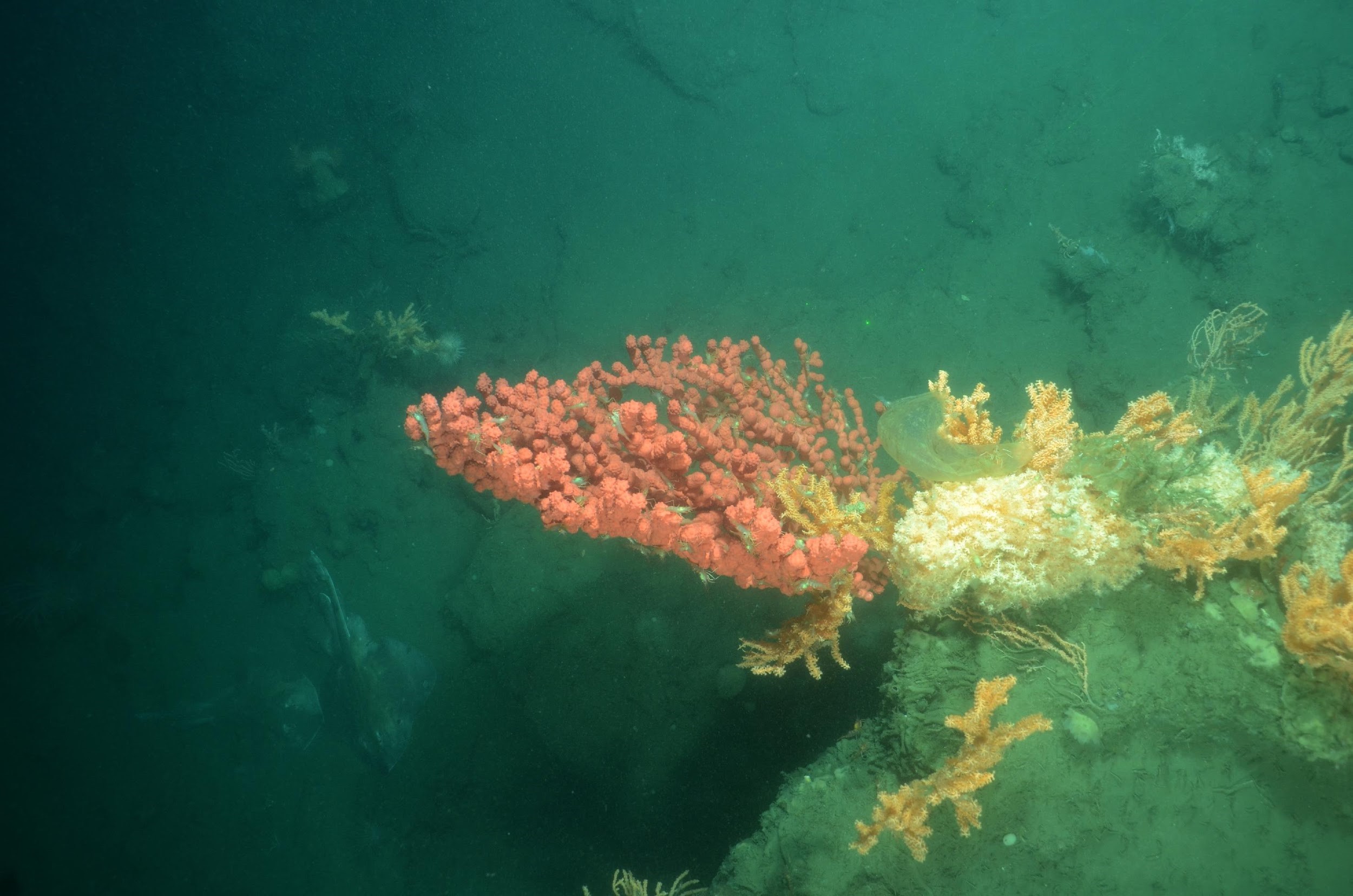Though near to some of the busiest ports and coastal waters in the world, the deep-sea canyons of the Mid-Atlantic Ocean are little-explored. Over the last few decades, scientists have discovered that these mysterious marine canyons are home to an impressive array of corals, sponges and fishes. A team of scientists from the Woods Hole Oceanographic Institution recently used a ship tethered digital camera system to document marine life in the canyons in collaboration with the Deep Sea Coral Research and Technology Program, NOAA Fisheries Service, the National Centers for Coastal Ocean Science, and the National Ocean Service. An Executive Summary of these findings with an appendix, entitled Deep-water Coral and Fish of U.S. Mid-Atlantic Canyons: implications for management and conservation, can be found on MARCO’s website here.
We are only just beginning to understand what the canyons hold. The presence of deep-water coral communities off the Mid-Atlantic and Northeastern United States was first confirmed in the late 1970’s through submersible dives and lowered cameras. In the 1980’s, scientists discovered that these unique communities of corals, sponges and anemones are narrowly restricted to specific canyon habitats – vertical canyon walls and promontories that may be vulnerable to disturbance. In 2014, the FSV Henry Bigelow set out to survey the richness and abundance of the Mid-Atlantic’s seven deep-sea canyon marine life. Scientists towed an underwater camera at about 0.25 knots (0.28 mph), taking photos every 10 seconds at depths between 1 and 6 meters off the seafloor.
The Executive Summary of expedition findings is written for a broad public audience. More detailed information about each canyon’s habitat and coral species can be found in the Appendix. Highlights from the findings include:
- Thirteen types of hard and soft corals as well as fish were identified and located by latitude, longitude and depth in seven Mid-Atlantic canyons and one NE-Atlantic canyon: Washington, Accomac, Leonard, Wilmington, Spencer, Lindenkohl, Carteret, and Ryan (Northeast).
- Deep-water corals thrive in all of the mid-Atlantic canyons, between ~700 and 1850m with the greatest diversity and abundance between 800m and 1600m.
- The slope of canyon walls influences which kinds of species live there. Vertical canyon walls hold the greatest coral abundance and diversity as well as the highest abundance of fish. Sedimented habitats, especially those found at the heads of canyons, were mostly unoccupied by deep-water corals.
The better we understand the location and diversity of deep-sea coral-canyon ecosystems along the U.S. East Coast, the more prepared we are to make decisions which might impact these unique communities.
Keep an eye out for future MARCO releases of exciting – and important – coral and canyon expedition findings.

